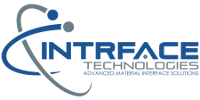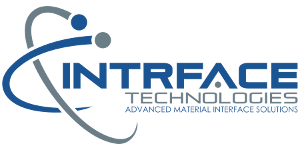We are constantly working on new atmospheric plasma treatment applications in our lab. If it can be treated with atmospheric plasma we’ve probably tried it but challenge you to stump us. If your application isn’t listed in the menu to the right of this page it’s probably not because we haven’t done it, we just haven’t had a chance to write it up and publish to our website yet so feel free to contact us regarding your specific surface preparation application.
You can categorize atmospheric plasma treatment applications in several ways. The most obvious way is by material type. Our atmospheric plasma treatment systems non-conductive and safe for both the operator and the material. This means you can plasma treat polymers, glass, metals and composites. Pretty much any type of material can be plasma treated. You can even treat PTFE ( DuPont™ Teflon® ) with our atmospheric plasma systems. The key to proper atmospheric plasma treatment is the plasma gas chemistry and dose. Plasma gas chemistry can be quite complex. Most of our solutions can run on simple facility air which is the most cost effective plasma process gas. Our atmospheric plasma systems are very flexible and the same system can also run on other plasma process gasses such as Nitrogen (N2), Oxygen (O2), Argon (Ar), Nitrogen (N), Helium (H2), Forming gasses with Hydrogen (H), carbon dioxide (CO2) and others. Proper atmospheric plasma treatment parameters are the key to a successful application. We have a wealth of knowledge and are here to help you off to a quick start in solving your bonding, coating, print, cleaning or marking challenges.
You can categorize atmospheric plasma applications by industry. Intrface Technologies has experience delivering high value atmospheric plasma based solutions used to clean, functionalize and activate substrates used in UAV, drone, catheter, guide wire, semiconductor & electronics encapsulation, touch screen, OLED, mems, PCR plates, microfluidics, lab on chip and many other applications. Our applications expertise includes the semiconductor, aerospace, composite, medical device and electronics industries.
Another way to categorize atmospheric plasma applications would be by the function or goal of the plasma treatment. Atmospheric plasma can be used as a critical cleaning process to remove low molecular weight (organics) from material surfaces. Cleaning by atmospheric plasma can be classified as a critical cleaning process. Examples of atmospheric plasma cleaning applications would be thin films, class and polymers used in optics, medical devices, lasers, electronics, medical devices and other critical high value components manufactured in clean room facilities. Closely associated with atmospheric plasma cleaning is activation. Activation refers to increasing the surface energy or “wetting out” of a material. For optimum bonding, coating, printing or marking performance, the adhesive, coating or ink must thoroughly “wet out” the surface to be bonded. “Wetting out” means the adhesive flows and covers a surface to maximize attractive forces between the adhesive and material surface. Another function of atmospheric plasma treatment is surface modification or functionalization. Surface modification by atmospheric plasma refers to the reaction of chemical groups on polymers such as carboxyl and amines that help to increase bond performance. Chemical groups and thin films can also be deposited on material surfaces using atmospheric plasma enhanced chemical vapor deposition or PECVD.
Yet another way to categorize atmospheric plasma applications would be by manufacturing process method. Continuous flow, single piece or single part manufacturing environment are an excellent fit for atmospheric plasma treatment applications especially when compared to the batch requirements when using a vacuum plasma system. Many medical device manufacturers are focused in creating single part traceability in their manufacturing process to ensure the highest possible reliability and accountability to regulatory agencies and are moving away from batch vacuum plasma process flows to in-line atmospheric plasma process flows.
It’s important to consider all of the costs of your current material surface preparation methods when weighing the options of introducing atmospheric plasma treatment to your process. Atmospheric plasma treatment has many advantages over vacuum plasma as well as older material surface preparation methods such as toxic wet chemistry, solvents, primers, grit blasting and sanding.
Atmospheric plasma advantages versus vacuum plasma include:
- Lower initial equipment costs
- Lower regular maintenance costs and minimal moving parts to service
- Virtually limitless form factor can be treated with atmospheric plasma vs the limited space in a vacuum chamber
- Single part traceability for quality control
- Easy adaptation to inline processing flows
Atmospheric plasma treatment has many advantages over traditional surface preparation methods:
- Obvious advantages over toxic chemical treatments for Environment, Health & Safety (EH&S) and OSHA regulatory considerations
- Air plasma systems require virtually no consumables reducing costs and inventory logistics and we all handling concerns
- Atmospheric plasma treatment can often times improve bond, paint and coating performance to the point of no longer requiring primers and tie layers resulting in major cost savings
- Grit blasting and sanding creates particulates that can endanger operators, inhibit overall part cleanliness and require costly regular cleaning of shop floors and workspace
We are constantly working on new atmospheric plasma treatment applications notes so please check back often for updates on the latest from our lab, rental programs and on-site feasibility and process development work.

